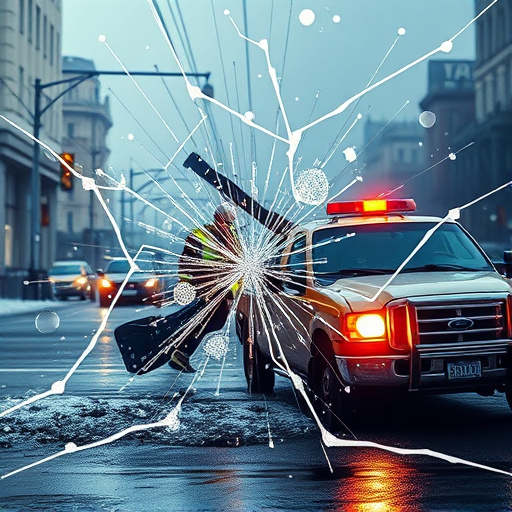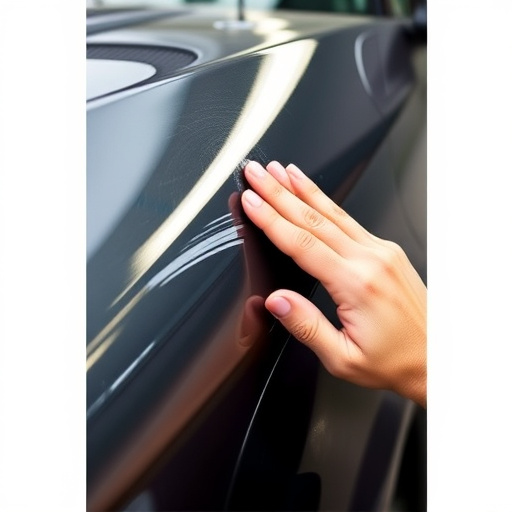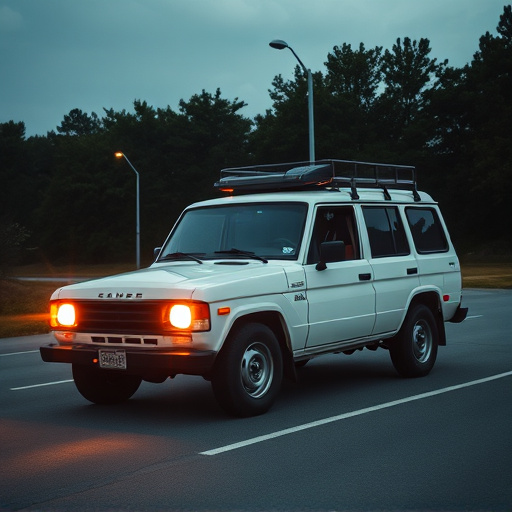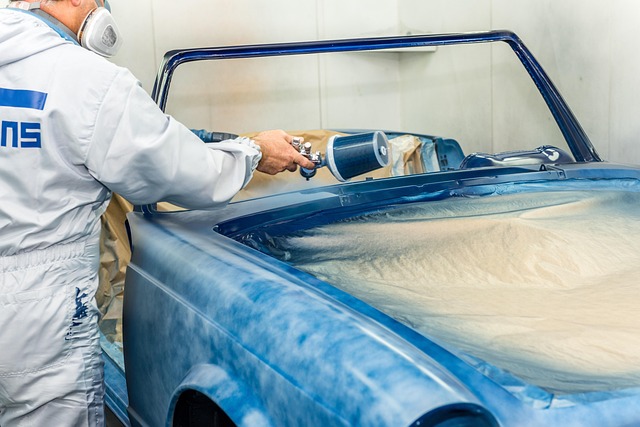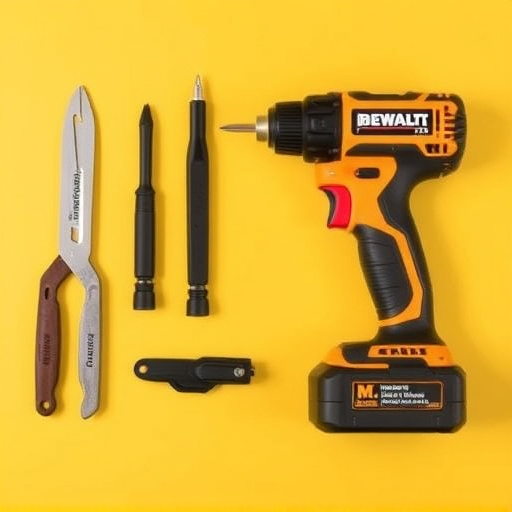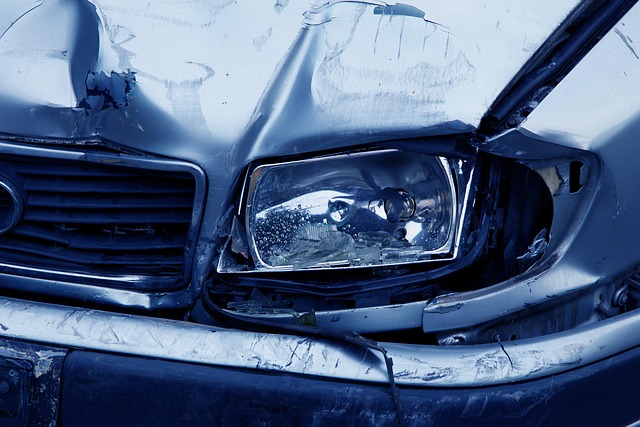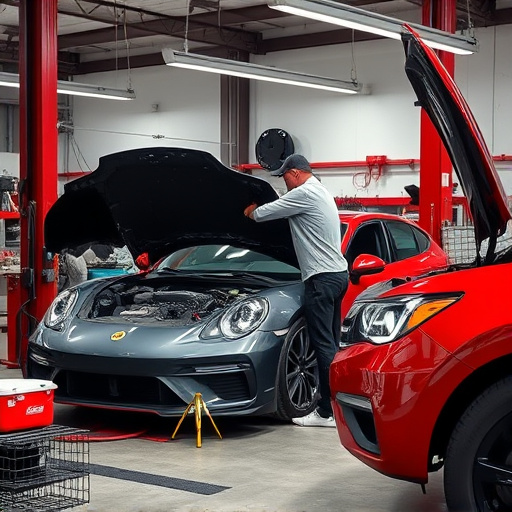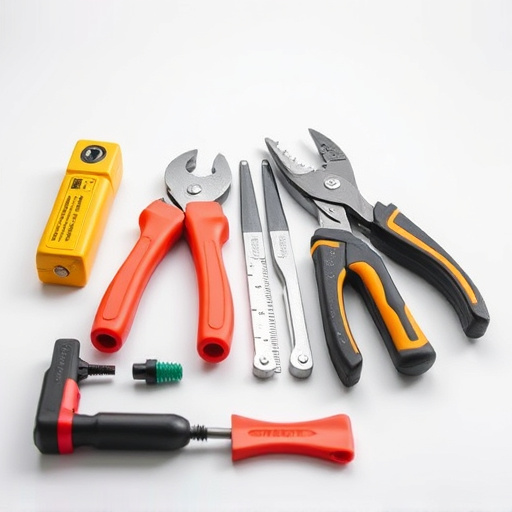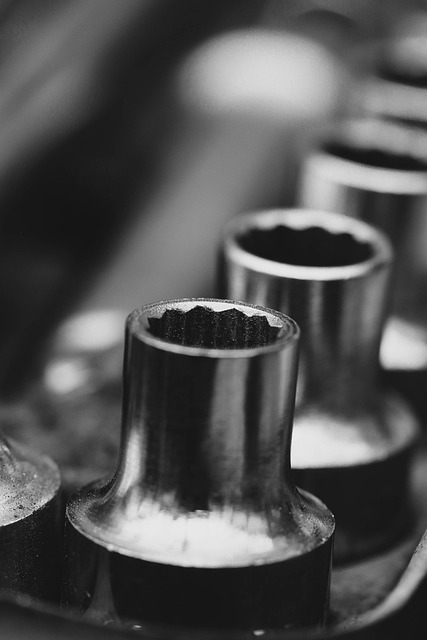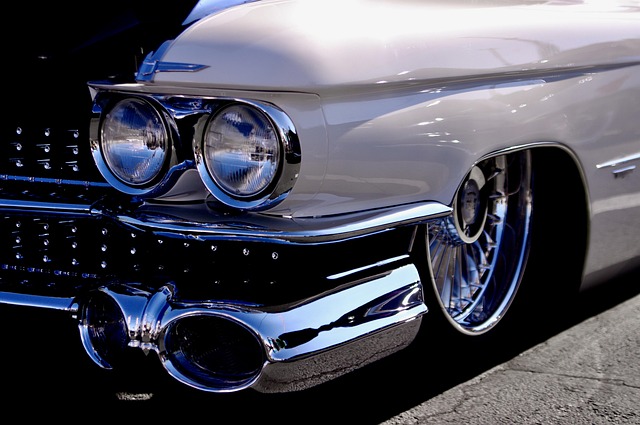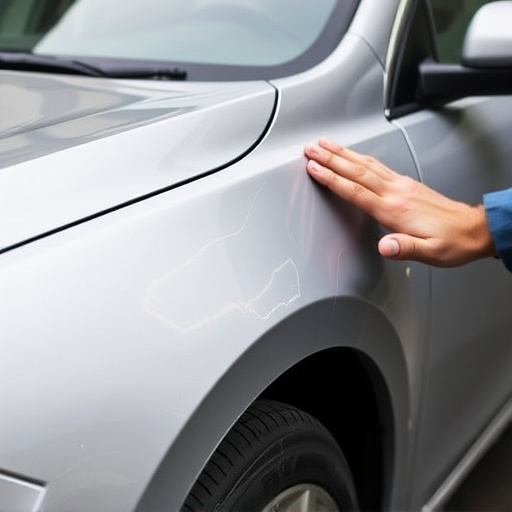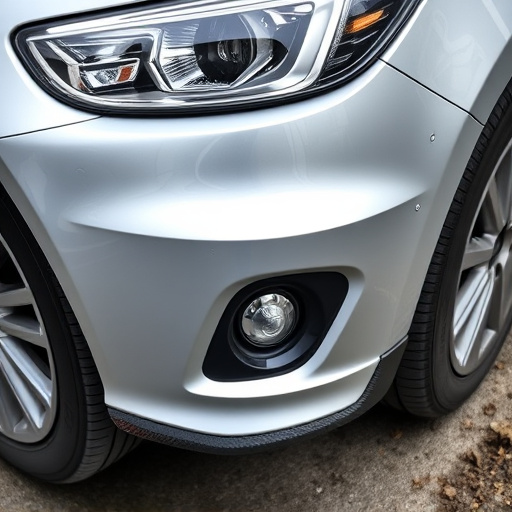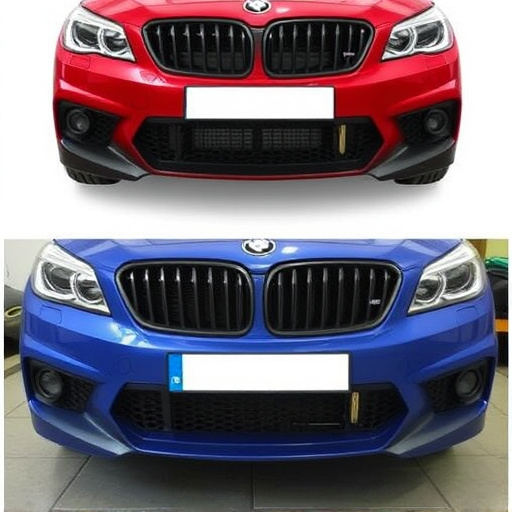MIG welding collision repair revolutionizes auto body work with precision and efficiency. Using inert gases like argon or CO2, this method fuses metal for strong, seamless joints ideal for dent repairs. Key equipment includes a power source, wire feeder, gas cylinder, nozzles, and electrodes. Safety protocols emphasize protective gear, machine calibration for different metals (steel, aluminum), and proper workspace setup. Pre-repair assessments use putty knives and sandpaper for minor dents and scratches. The step-by-step process involves cleaning, priming, welding along damage edges, and post-cooling sanding for a seamless finish. Practice and professional guidance are crucial for intricate repairs. Prioritize safety with PPE, well-ventilated space, proper grounding, and dry, clean welding wire. Use precise technique, strategically positioning welds while maintaining structural integrity. Regularly inspect work for inconsistencies and make adjustments for high-quality auto body repair comparable to professional services.
“New to collision repair and eager to dive into MIG welding? This comprehensive guide is your perfect starting point. We’ll unravel the basics of MIG welding, equip you with essential knowledge about necessary tools, and provide a detailed, step-by-step approach for successful collision repairs. From safety precautions to effective techniques, learn how to navigate this powerful process like a pro. Get ready to transform damaged panels into flawless finishes—all with the expertise of MIG welding.”
- Understanding MIG Welding: The Basics and Equipment
- Step-by-Step Guide to MIG Welding Collision Repair
- Safety Measures and Tips for Effective Collision Repair with MIG Welding
Understanding MIG Welding: The Basics and Equipment

MIG welding collision repair is a specialized technique that has revolutionized automotive collision repair and vehicle bodywork restoration. It’s a process where metal is fused together using a metallic inert gas, typically consisting of argon or carbon dioxide, to create strong, seamless joints. This method is particularly popular in car dent repair due to its precision and efficiency.
The equipment for MIG welding involves several key components: a power source, a wire feeder, a gas cylinder, and various nozzles and electrodes. The power source generates the heat required for welding, while the wire feeder feeds the metal wire into the joint. The gas cylinder supplies the protective inert gas to prevent oxidation during the welding process. This setup allows for precise control over weld quality and consistency, making it an ideal choice for achieving high-quality results in automotive collision repair and vehicle bodywork restoration projects.
Step-by-Step Guide to MIG Welding Collision Repair
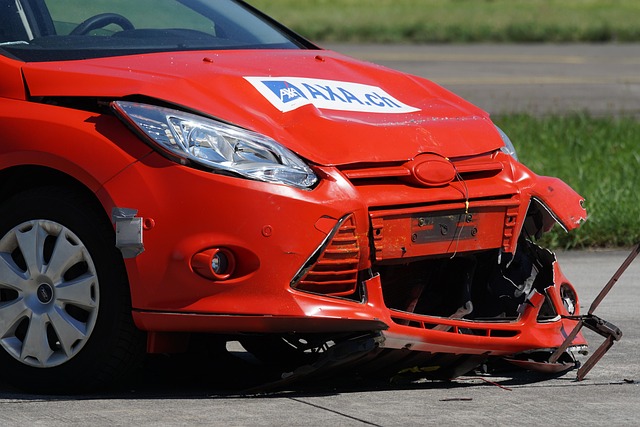
Starting with preparing your workspace, ensuring proper ventilation, and donning protective gear including gloves, safety glasses, and a respirator mask. Next, set up your MIG welding machine according to the manufacturer’s instructions, calibrating it for the specific metal you’re working on, be it steel or aluminum.
Now, inspect the damaged area meticulously before beginning repairs. For minor dents and scratches, use specialized tools like putty knives and sandpaper to shape and smooth the surface. Once ready, follow a step-by-step process: clean the area thoroughly, apply primer if needed, weld along the damage’s edge for a neat finish, and finally, after cooling, meticulously sand any rough spots for a seamless repair. Remember that practice makes perfect; for intricate or severe repairs, consider seeking guidance from an experienced welder to ensure you achieve professional-grade results in your MIG welding collision repair.
Safety Measures and Tips for Effective Collision Repair with MIG Welding
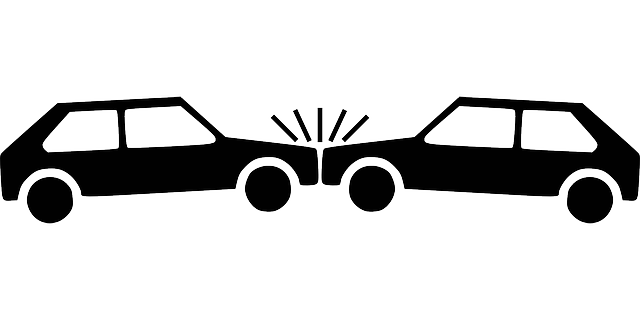
Before beginning any MIG welding collision repair, prioritizing safety is paramount. Always wear appropriate personal protective equipment (PPE), including gloves, eye protection, and a respirator to shield against harmful fumes and sparks. Establish a well-ventilated workspace, as the process can generate intense heat and produce toxic gases. Ensure proper grounding and use dry, clean welding wire to minimize the risk of electrical hazards.
Effective collision repair with MIG welding requires meticulous technique and precision. Position welds strategically to strengthen structural integrity while minimizing heat input to prevent excess metal distortion or burn-through. Utilize a suitable welding machine set at the correct voltage and wire speed for your specific material. Maintain consistent pressure and angle during the welding process, ensuring clean, precise bead patterns. Regularly inspect your work for any inconsistencies or defects, making adjustments as needed to achieve high-quality auto body repair results, comparable to professional body shop services, even for complex vehicle dent repair tasks.
For novice welders looking to explore the realm of collision repair, MIG welding offers a powerful toolset. By mastering the basics and adhering to safety protocols, you can confidently tackle this specialized craft. The step-by-step guide provided offers a solid foundation, while safety measures ensure your well-being and the quality of each joint. With practice and these expert tips, you’ll be well on your way to becoming proficient in MIG welding collision repair, revolutionizing the way you approach automotive restoration.
